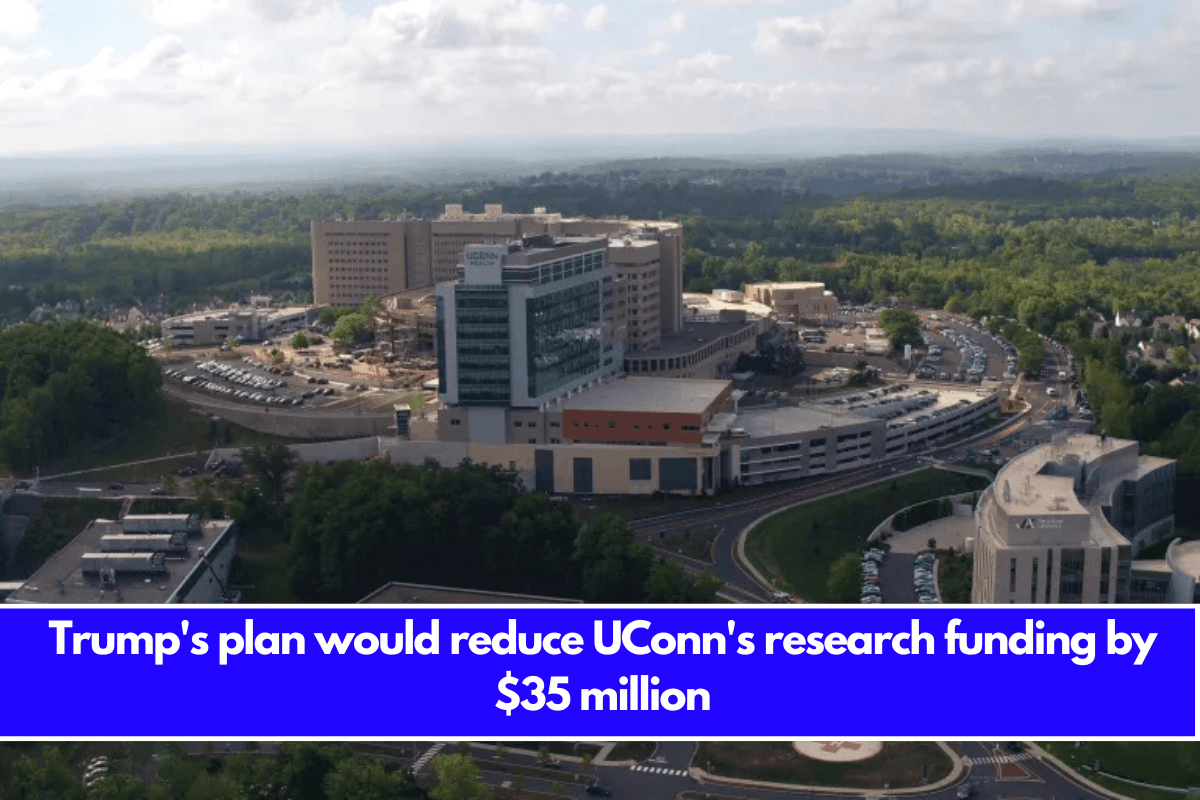The National Institutes of Health (NIH) reduced indirect funding for research to 15%, according to supplemental guidance. According to a press release, the University of Connecticut and UConn Health will lose $35 million in research funding.
In response, 22 states, including Connecticut, have sued, led by the attorneys general of Illinois, Massachusetts, and Michigan. A federal judge has temporarily halted the cuts, according to CBS News.
Stephanie Reitz, the university’s spokesperson, explained indirect costs in an email.
“In addition to grant funds that go toward federally funded research, institutions can recover part of the overhead costs they incur to undertake that research,” Reitz told me. “The percentage that’s reimbursed to the institution is the ‘indirect costs recovery rate’ they reference in their letter.”
According to Reitz, indirect costs for UConn and other institutions conducting NIH-funded research include the use and depreciation of buildings, research equipment, labs, and other administrative costs.
“Currently, UConn can recoup 61% of its indirect costs for NIH-funded research at Storrs and the regional campuses, and 66.5% for research at UConn Health,” Reitz estimated.
According to Reitz, this cut would result in increased costs for UConn or a decrease in research activity.
“Federal funding, including from the NIH and other agencies, comprises 85% of UConn’s external revenue for research, training, and public service,” Reitz told the conference.
UConn President Radenka Maric, Provost Anne D’Alleva, UConn Health CEO Andy Agwunobi, and Vice President for Research Pamir Alpay issued a statement to employees and faculty.
“If implemented as announced, this change will impair our ability to produce innovative research that benefits all parts of society and place a significant financial strain on the university,” according to a statement.
According to a press release explaining the lawsuit issued by Chief of Communications for the Attorney General’s Office Elizabeth Benton, UConn and UConn Health received $620,648,927 in NIH funding this year.
In Benton’s press release, Attorney General William Tong discussed the consequences of the cuts.
“Donald Trump is defunding cancer research. He’s cutting funding for heart disease treatments. He wishes to defund research into autism, Alzheimer’s disease, and preventable newborn deaths.
“He wants to make us all sicker, and we cannot let him,” Tong stated in the press release. “In his sloppy rush to slash funding, Trump has ignored federal law, and we are seeking a court order immediately blocking this illegal overreach.”
The press release addressed indirect cost agreements.
“Indirect cost reimbursements are based on each institution’s unique needs, negotiated with the federal government through a carefully regulated process, and then memorialized in an executed agreement,” according to the news release.
“The Trump administration claims to be abandoning those agreements, putting public health and medical advancements at risk. The coalition’s lawsuit aims to prevent such reckless and illegal behavior.
22 states have filed a lawsuit alleging that the suspension violates the Administrative Procedure Act, which governs how federal agencies can issue regulations.
UConn released a statement in support of the action.
“The cut will create a burden on UConn and [UConn Health] as many of these costs are unavoidable and committed (such as the facility cost of a laboratory) to conduct NIH research,” Alpay wrote in the announcement. “Such reduction may result in jobs loss.”
Another statement from UConn stated that this policy would not result in cost reductions, but would force UConn to bear these costs through state appropriations, putting a burden on taxpayers; tuition revenue, which could increase student costs; and endowment funds.
The NIH’s supplemental guidance defended the cut.
“Indirect costs are, by their very nature, ‘not readily assignable to the cost objectives specifically benefitted’ and are therefore difficult for NIH to oversee,” the document of guidance stated.
“However, the average indirect cost rate reported by the NIH has ranged between 27% and 28% over time. […] Many organizations charge much higher indirect rates—over 50%, in some cases over 60%.”
The guidance compared federal and private foundation funding.
“Most private foundations that fund research provide substantially lower indirect costs than the federal government, and universities readily accept grants from these foundations,” according to the instructions.
“For example, a recent study found that the most common rate of indirect rate reimbursement by foundations was 0%, meaning many foundations do not fund indirect costs whatsoever.”
